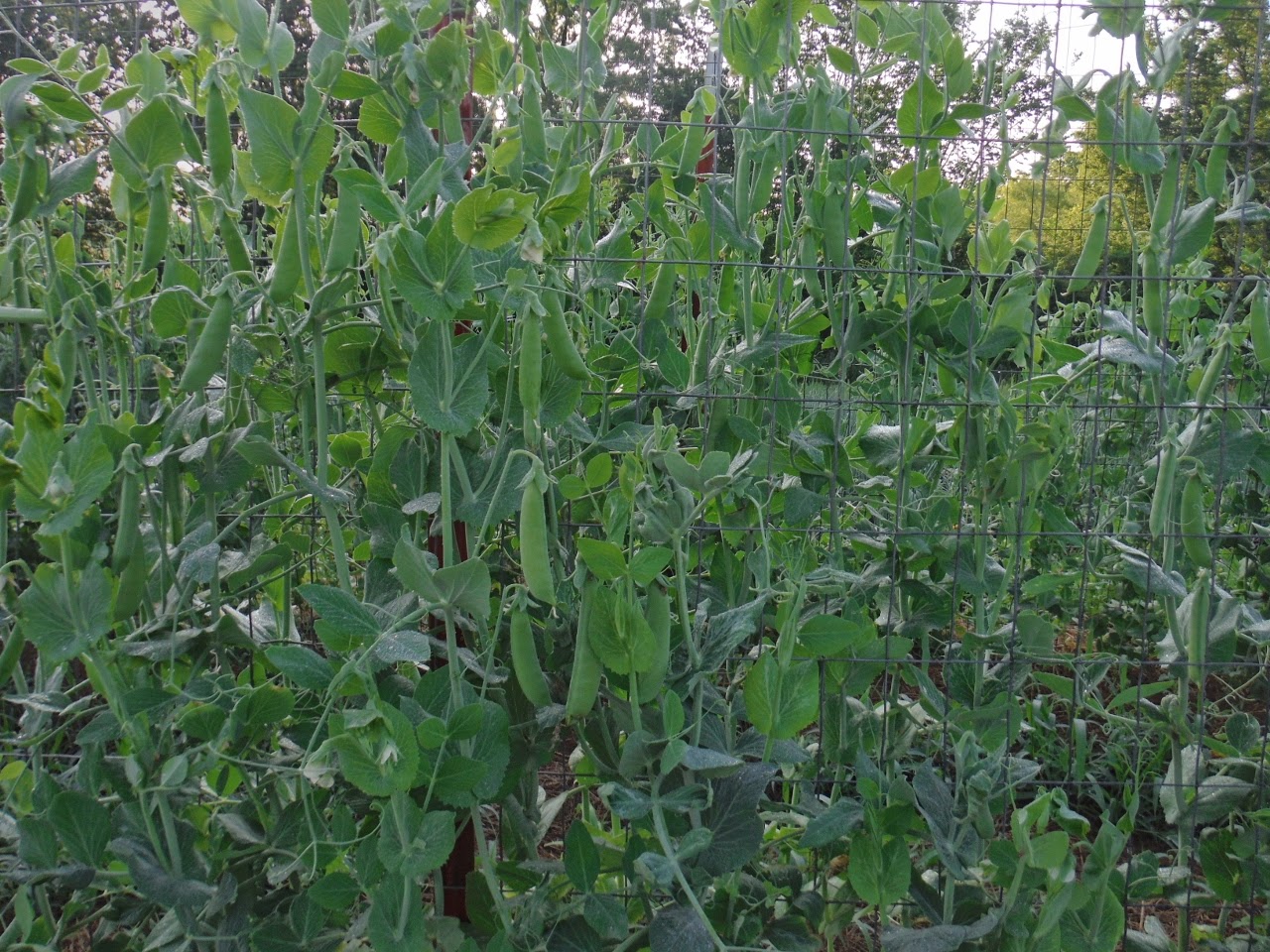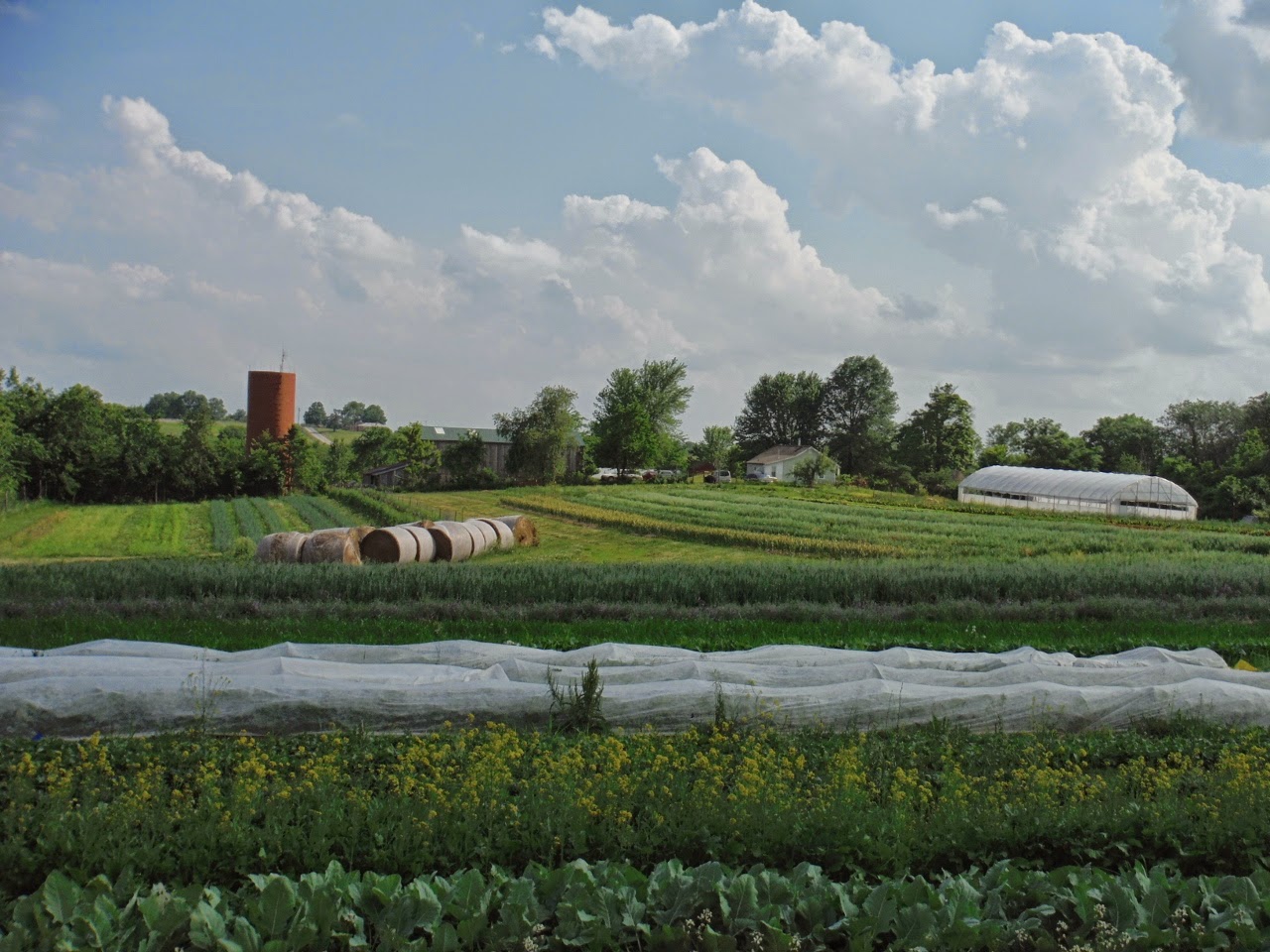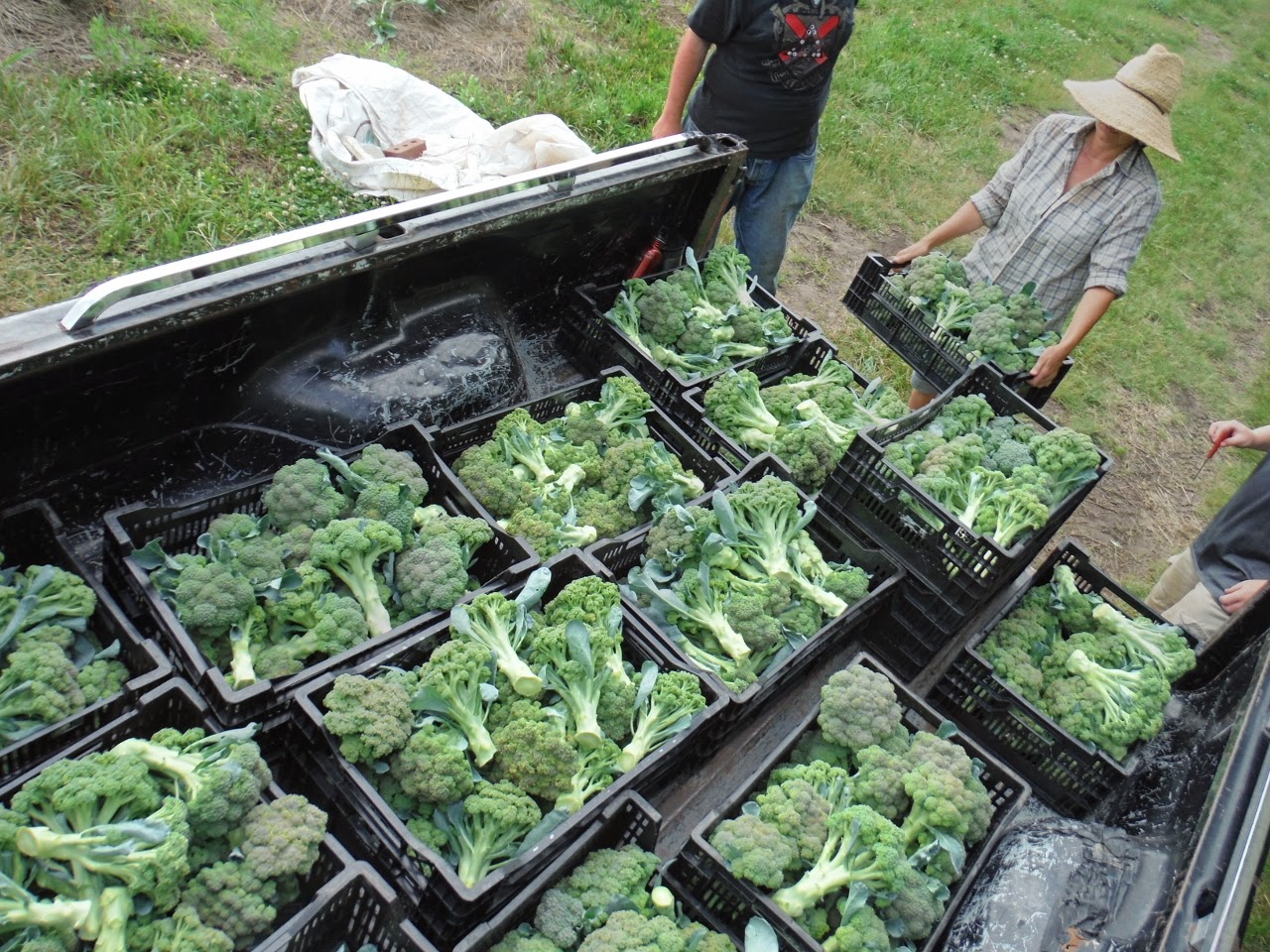And so we reach 2012 … and the reminiscing is about to end. It has been instructional and cathartic for Rebecca and me to review what the farm has been through over the last ten years. Every year has been a new set of challenges and unpredicable weather. As an example, the contrast between Spring 2012 and our present weather conditions is striking.
 |
| Red bud blooming March 24, 2012 |
2012 broke all sorts of records, including the hottest January-June on record and third driest year on record. The drought and mind-numbing heat of Summer (the average daily high in July was 98.2 deg F) made work difficult and came close to drying up our irrigation pond.
It was a very strange, if not somewhat bizarre year for the crops, with the early Spring and hot, dry Summer causing many plants to mature up to a month early. Strawberries were ripening on May 1 instead on Jule 1. Garlic was ready by June 5, a month ahead as well. And most of the potatoes quite literally cooked (and rotted) in the ground as the soil temperatures topped 90 degrees.
There were some major successes though. In the Spring the sugar snap peas were dripping off the vines with a new record of 550+ lbs. As mentioned, the tomatoes thrived…9,397 pounds of virtually blemish-free beauties thanks to the dry weather. The sweet potatoes were the most beautiful specimens we had ever grown. We also had good success with carrots, the Fall crops and many other vegetables.
 |
| Ryan picking peas (photo by Bill McKelvey) |
 |
| tons of tomatoes |
 |
| A good sweet potato plant |
 |
| Sweet pea very full for the CSA delivery to the Bad Seed |
Despite the crazy weather, the farm crew was up to the task. Dani Hurst returned for a second season as an apprentice and even squeezed a May wedding to Derek Brown into the year. Apprentice Ryan Stubby graced us with his hard work, good nature and awesome kale chips. Harvest extras allowed Ryan to hone his skills at food dehydrating, a talent he hopes to use in future ventures.
 |
| Ryan and Dani tending to the tomatoes in June |
CSA member, Mark Flynn, had some free time that Summer and was a big help during the big tomato harvest and Fall planting push. The lack of rain and extreme heat created the need to put out mulch for the cabbage, broccoli and other July plantings earlier than normal. It was a big effort to complete, as the Summer harvest was also in full swing. Thanks again Mark.
 |
| Ryan, Mark, Dani and Rebecca planting cabbages in July |
In June we traveled to Richmond, MO for the KC CSA Coalition tour of Parker Farms. As vegetable farmers and meat eaters we appreciate the effort that goes into raising free-range, pasture-fed livestock. Since we started collaborating with the Parker’s in 2006, they have fed us most all of the meat we have eaten in the last 7 years. Tom, Paula and their four daughters hosted a delicious pot-luck and stroll of the farm. They are doing it right.
 |
| Pasture-fed and free-range beef ala Parker Farms |
The other big task in 2012 was the construction of our new high tunnel. Grading of the site began in January. Two volunteer work days and many other hours of piecing it together were successful in getting things in order by mid-September. The high tunnel crops flourished that fall and allowed us to extend the season for 4 weeks.
 |
| Volunteers helping put up the main structure March 10th |
 |
| Finished high tunnel on November 11th |
Our last days of the season were out of the norm that year too. On October 20 the Outstanding in the Field crew and Justus Drugstore again set up at the farm for another fantastic dinner. It was a tough day though, as it was announced by OITF founder Jim Denavan that we were hosting the coldest event they ever held. Crazy for that to happen after the Summer heat wave.
We entered the Winter of 2012 already planning for an expansion of the CSA to 150 members in 2013. But first we are able to take a train ride to the Southwest and relax in New Mexico hot springs for a week. Such a break is always good.
 |
| The oft-photographed St. Francis Chuch near Taos, New Mexico |
If you have been following this recollection all the way through we thank you, and hope you enjoyed it. We would appreciate your comments and look forward to hearing from our blog readers.
Next up…the 2013 season.
.jpg)
.jpg)
.jpg)